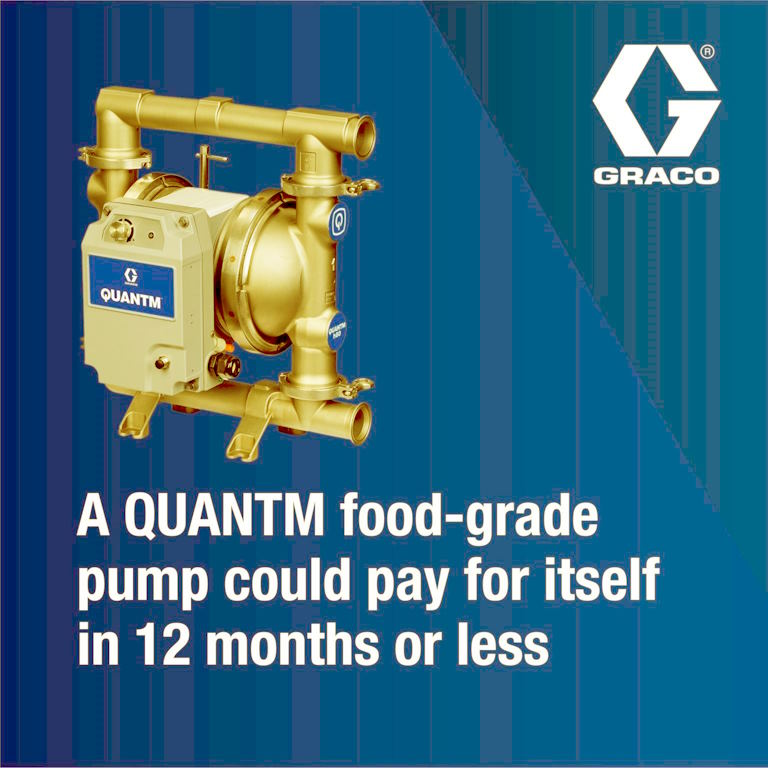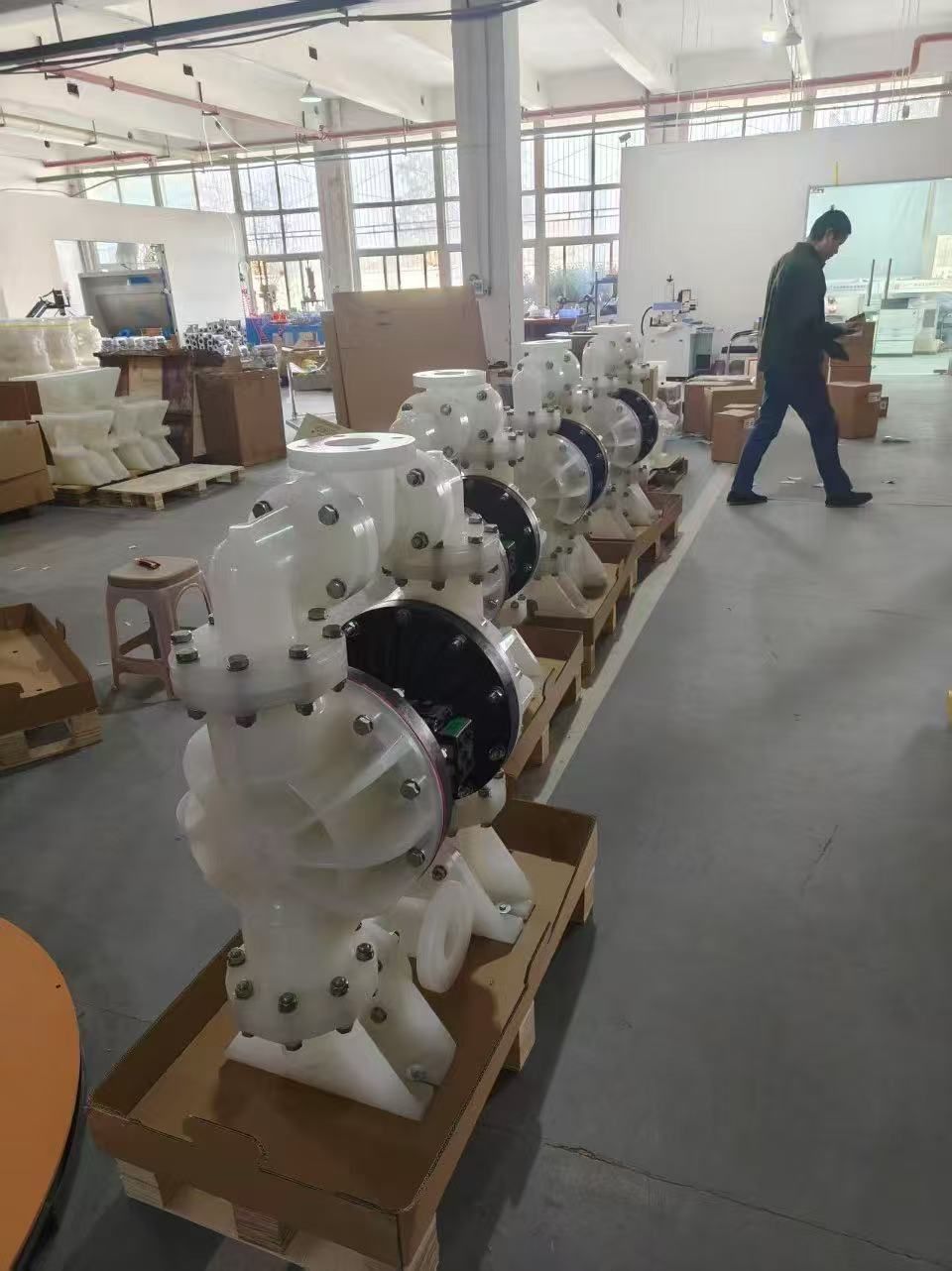
Diaphragm pumps are widely used in the food and pharmaceutical industries because they can pump dense liquids, are resistant to solids, are leak-proof, and can also be operated in dry conditions . Since food and pharmaceutical products are highly sensitive to microbial and chemical contamination, pumps must be designed and manufactured according to applicable hygiene standards.
The important sources that play a crucial role in this context include the following:
-
US Food and Drug Administration (FDA)
-
EHEDG (European Healthcare Engineering and Design Group) Europe
Both organizations work in the field of food safety and health protection, but differ in their methods, standards, and requirements for the design and certification of process equipment, including diaphragm pumps. In this article, we examine and compare both standards.
What are the FDA standards?
The U.S. Food and Drug Administration (FDA) is the government agency responsible for regulating the safety of food, drugs, cosmetics, and medical devices. In the food industry, the FDA does not directly certify pump design or performance, but rather focuses on the materials used in the manufacture of food-contact components such as diaphragms, seals, and pump housings.
Key features of FDA standards for diaphragm pumps
-
Approvals for product contact materials:
-
All parts that come into direct contact with food must be made of materials listed on the FDA approved materials list.
-
Typical materials are stainless steel (316L stainless steel), special elastomers (EPDM, NBR, PTFE) and food-safe plastics.
-
-
Chemical safety:
-
Materials must be resistant to chemical migration to prevent harmful compounds from leaching into food.
-
-
Wash compatibility:
-
It can be cleaned and disinfected with detergents and chemicals without damaging it or changing the properties of the material.
-
-
End-user focus:
-
The main objective is to ensure consumer safety through control of raw materials.
-
What is the EHEDG standard?
The European Hygienic Design and Engineering Group (EHEDG) is an international organization of equipment manufacturers, food processing companies, and research institutes dedicated to the development of hygiene equipment. Unlike the U.S. Food and Drug Administration (FDA), which focuses more on materials, the EHEDG focuses on the entire equipment.
Main features of EHEDG diaphragm pumps
-
Healthy design:
-
The internal parts of the pump must be designed without dead zones and surfaces where contaminants can accumulate.
-
-
On-site cleaning options (CIP/SIP):
-
The pump can be cleaned and disinfected without completely disassembling it.
-
-
practical control:
-
The EHEDG not only approves the materials but also carries out real hygiene and cleaning tests on the pump design.
-
-
Microbiological control:
-
The design must prevent the growth of microorganisms and ensure thorough cleaning of all product-contacting surfaces.
-
10 Ways to Damage a Double Diaphragm Pump (VerderAir)
Comparison of FDA and EHEDG diaphragm pumps
| standard | Food and Drug Administration | European Society for Health and Environmental Design |
|---|---|---|
| Main directions | Materials used in product contact parts | Hygienic design of all equipment and processes. |
| Scope | All over the world, especially in the United States | Europe and gradual internationalization |
| Type of review | Compliance with materials | Certificate for Sanitary Design |
| Valuation method | Review of documents for raw materials | Practical testing of the devices under real washing conditions. |
| Level of requirement | Minimum (focus on material security) | Wider (material + design + cleaning) |
| suitable | Small and medium-sized producers who need quick and cost-effective permits | Large manufacturers and sensitive industries with high hygiene requirements |
Request for selection of a diaphragm pump
-
In the food industry in general:
-
It is sufficient to use an FDA-approved pump, as the materials used are safe for contact with food.
-
For example: Production of beverages, sauces and dairy products for moderate allergies.
-
-
In highly sensitive areas (sterilized dairy products, baby food, pharmaceuticals):
-
Even more important is the EHEDG certification, as it guarantees hygienic design and comprehensive cleaning.
-
-
Export and international compliance:

Advantages and limitations
FDA benefits
-
Easier and cheaper.
-
Particular attention is paid to consumer health in relation to the effects of chemicals .
-
Recognized worldwide, especially in the United States.
FDA restrictions
-
The hygienic design of the pump has not been tested.
-
Places where there is a risk of microbial contamination.
Advantages of EHEDG
-
Full coverage, hygienic and washable design.
-
Controlling microbial contamination ensures greater safety.
-
Suitable for sensitive and sterile procedures.
EHEDG restrictions
-
The costs for testing and certification are high.
-
The complexity of design and production is higher.
New industry trends
-
Many diaphragm pump manufacturers are seeking FDA and EHEDG approval to gain acceptance of their products in the US and European markets.
-
Upgrade to a new design with minimal dead space, screwless connections, and integrated CIP/SIP functionality.
-
Use flow modeling software to reduce product accumulation points and improve flushability.
Finally
While both FDA and EHEDG standards aim to ensure safety and quality in the food industry, the differences are clear when it comes to diaphragm pumps. The FDA emphasizes the selection of safe materials , while the EHEDG emphasizes hygienic design and easy cleaning .
The choice between these two standards depends on the industry, product sensitivity, target market, and budget. While food companies are generally satisfied with FDA certification, companies specializing in the production of sensitive products such as pharmaceuticals or baby food often prefer EHEDG certification. For exporting companies, using pumps certified to both standards is the optimal solution.